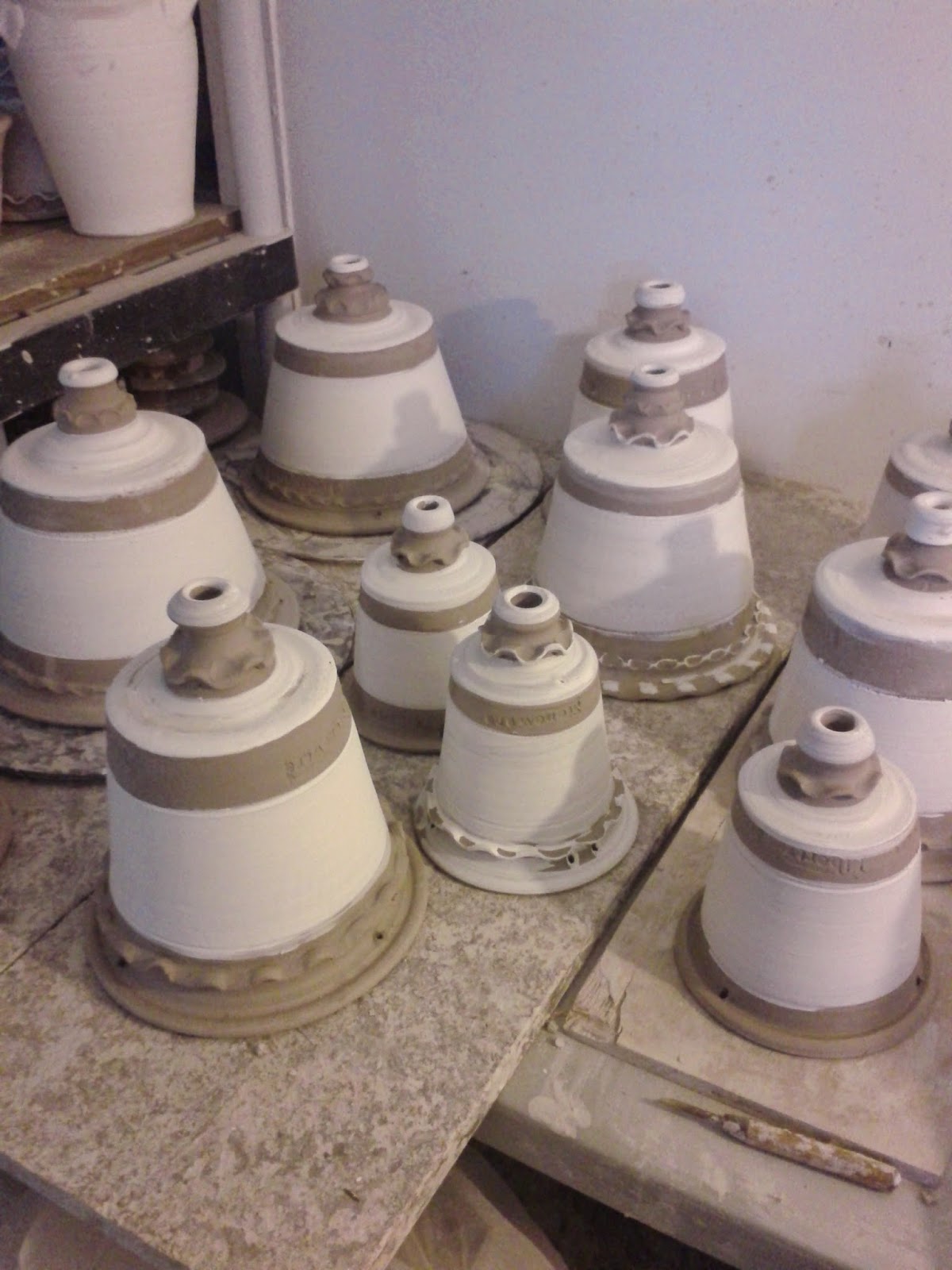Sometimes it is embarrassing to see how long I go between posts. Since I have been so delayed in doing even weekly updates, I thought I would share a bunch of updates with photos. The biggest update I have to share is the following announcement our dogs made on Facebook recently:
Yes, this means yours truly is going to have a baby sometime in January. Needless to say, that has been a fairly major distraction from posting! It should make throwing pottery pretty interesting later this fall, but we will cross that bridge when we get to it.
 |
| Compost crocks |
 |
| Mugs |
 |
| Hanging planters |
Shortly after returning from my ventures in New England, I gave a presentation at the Museum of Early Southern Decorative Arts' Summer Institute on Kentucky pottery. I enjoyed that thoroughly. It took me a little while to get back in the studio, and when I did I got right back to making lots of pots. This was in preparation for a firing this coming weekend with Joseph Sand.
I participated in Blowing Rock's Art in the Park in mid-July, which turned out to have 60 degree (Fahrenheit) weather and rain. Needless to say, the crowds were not quite as expected, and it was a soggy day.
 |
| Slip trailing on large bowls |
Just before the Blowing Rock show, I cleaned the studio up, wiped down the wheel really well, and got out some new clay. For a long time now I have had in the back of my mind the want to fire earthenware in the wood kiln for several reasons. One, when I have seen wood-fired earthenware pots I have always felt them to be warm and inviting. Two, for a purely experimental reason, I want to see whether the salt that is now coating the interior of my kiln will flux and off gas onto the earthenware at all. Call it a bit of experimental archaeology, but I am incredibly curious to see what happens. The firing is coming up in a few weeks in mid-August. I'll be joining forces with Anne Partna from Blue Hen Pottery for this venture.
 |
| Marbled and slip decorated dishes |
 |
| Slip decorated bowls |
Earlier this week I helped Joseph Sand load his large kiln and will be on the firing crew on Saturday. So, here's to rolling into August with the hopes of more posting to share some of my experiments in the world of earthenware and keep you updated on the developing human being I am incubating. Thanks for reading!










